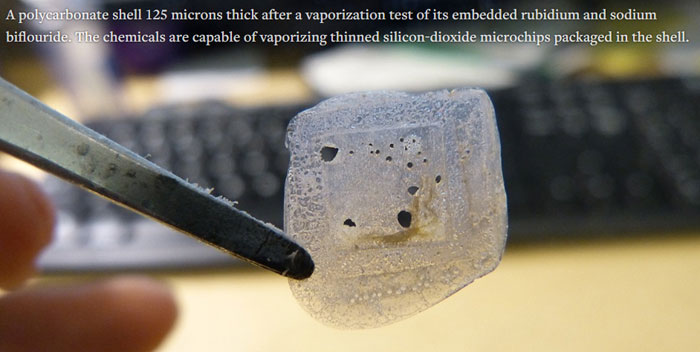Self destructing electronics are at the heart of an emerging field of technology known as transient electronics. Until now, self destructing devices came with one or two drawbacks: a device might use soluble electronics and thus need water or moisture to be introduced to disappear; while others might disintegrate when a certain temperature was reached, perhaps requiring a heating element in the device, which could be dangerous to the environment. Now engineers from Cornell University and Honeywell Aerospace have demonstrated a new more integrated and environmentally friendly method for remotely vaporizing electronics – along with any stored data.
The method pioneered by Cornell and Honeywell is attractive as it doesn’t rely upon extra components in a device – such as water containing vessels or heating elements. Furthermore, it is said to produce no harmful byproducts when vaporization occurs. This could be good for biomedical and environmental applications along with data protection.

These remotely vaporisable components / devices rely on silicon-dioxide microchips attached to a polycarbonate shell. Inside the shell are microscopic cavities filled with rubidium and sodium biflouride – “chemicals that can thermally react and decompose the microchip,” explains the Cornell Chronicle blog. The vaporisation can be triggered remotely via radio waves or some other communication method. Once triggered, graphene-on-nitride valves that contain the chemicals open to destroy the circuitry. Both the polycarbonate shell and electronics are destroyed. Interestingly the vaporizable electronic parts have been designed with a stackable architecture allowing for arbitrarily large vanishing electronics to be produced.
Though this vaporizable electronics architecture might sound like the stuff of spy dramas it is expected to be used in environmental monitoring, internet of things sensor systems, and similar civil applications. However, portions of the research were funded under the DARPA (US military) Vanishing Programmable Resources program.













